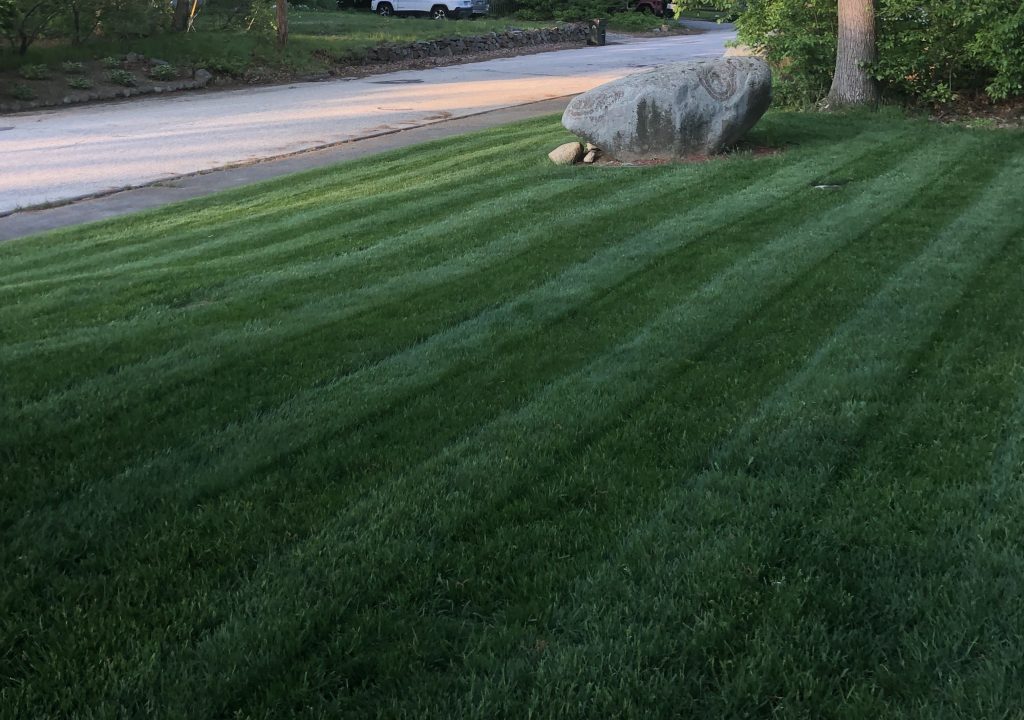
Introducing new grass to your lawn every year will keep your turf looking thick, green and healthy. Whether some grasses die off during the stressful summer months. Bare spots can occur from insect damage. Lawn mower wheels may have gauged some areas. No matter what, overseeding your lawn – even hand spot-seeding – is always a great idea. The overseeding guide will teach you step-by-step how to properly overseed your lawn for success.
the best time to aerate and overseed cool-season lawns is the fall. The warm soil temps from summer coupled with cooler daytime and nighttime temperatures makes the perfect environment for new grass seeds to germinate and thrive. Watch the weather forecast – particularly for heavy rainstorms – but Labor Day weekend is a good rule of thumb here in Massachusetts.
Prepare the grass
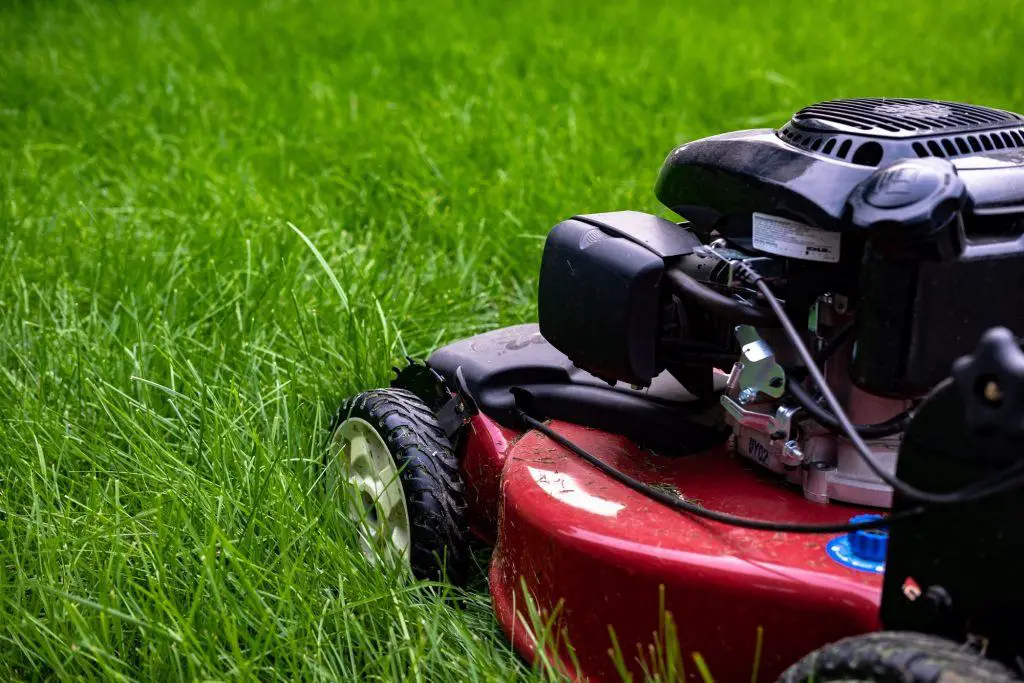
Mow low. Important to try to keep the top-growth as even as possible. This way the taller established grass blades won’t overgrow the new seeds and choke them out. New grass also needs sunlight, so the shorter the established lawn, the less shade will be upon the new seedlings. The established grass will naturally outgrow and be taller than the new seed germination, but cutting the grass down to 2″ instead of 3″ ahead of time will make it that much closer.
Dethatch / Power Rake
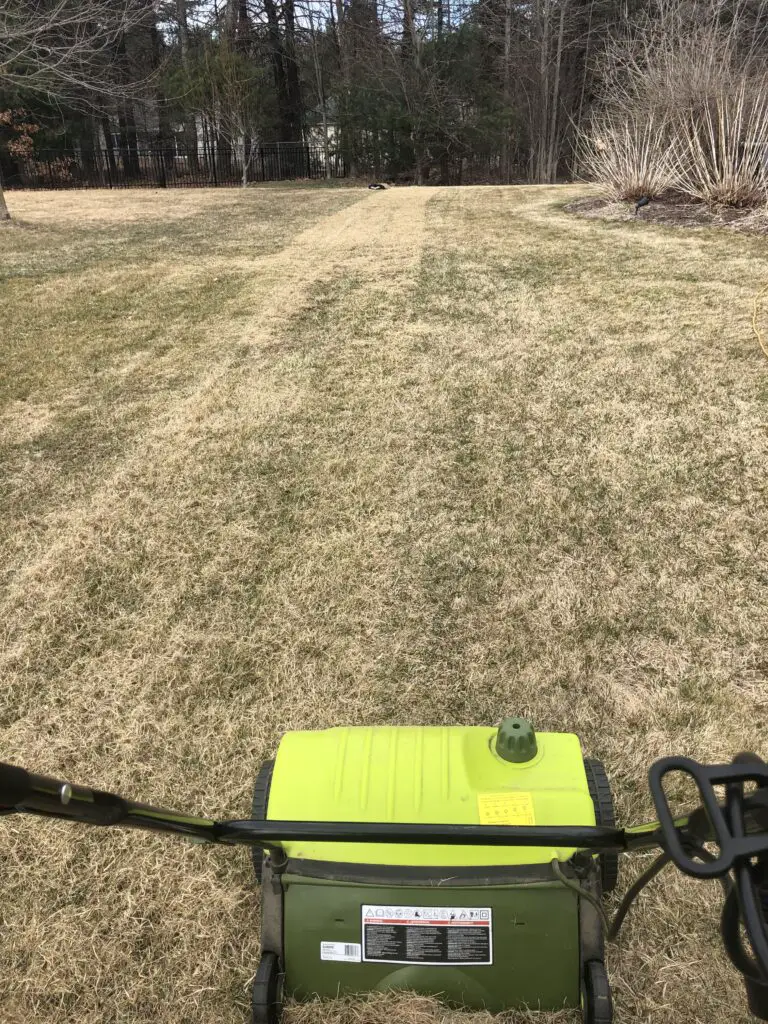
Use a walk-behind power rake, a tow-behind dethatcher, or a manual hand thatching rake to lift up the thatch layer. You shouldn’t have to do this every year unless you have more than 1/4″ of thatch. If you haven’t overseeded in this manner before – or in a couple of years – then it’s a good idea to include this step. Removing the thatch and dead grass will allow more room and prepare the ground for new seeds. You don’t want to gauge the ground, but the tines will scrape the soil and prove nooks and crannies to help house the new seeds. This seed-to-soil contact is paramount. Rake up and remove the thatch and dead grass, and use a mower or leaf blower to fully clean up.
Core Aerate
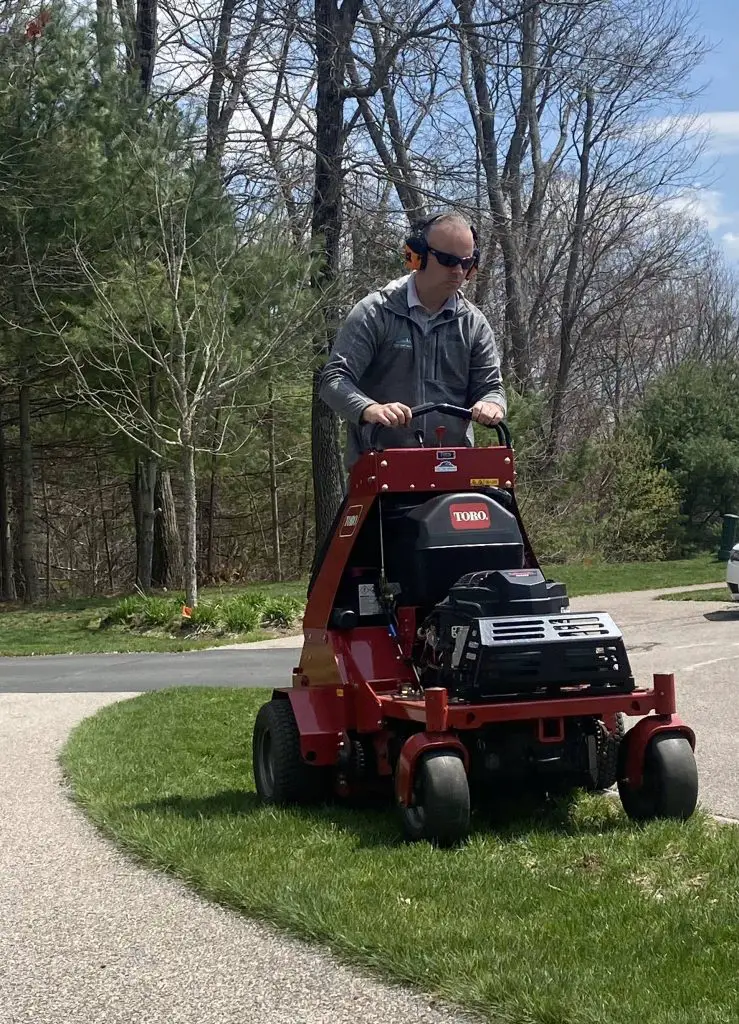
A core aeration is a good idea every fall for cool season lawns. Pulling cores will help loosen compacted soil. It also provides more airflow and oxygen to the grassroots, while allowing water and fertilizers to more quickly penetrate deep into the root zone. Core aerating is better than spikes. Like dethatching, you can rent a walk-behind or a tow-behind core aerator. Make sure to water the lawn the day before. It’s much more difficult, even impossible, to pull nice 3″ plugs from dry soil. Leave the cores on the ground to decompose naturally.
Quality Grass Seed

Choose a high quality grass seed. The best grass seed on the market is made by Jonathan Green. Hands-down. I use Heavy Traffic on my back lawn only and it stands up to a season long beat down from my kids and dogs. Black Beauty Original is what I originally opted for when I renovated my front lawn. It contains a mix of three tall fescues. Jonathan Green Black Beauty Ultra is their top of the line grass seed which is like the Original, but also contains a mix of perennial ryegrass and Kentucky Bluegrass. Avoid any “Quick Grow” grass seeds or anything that contains “annual” grasses – perennial seeds only here. These will certainly germinate quickly, but will slowly die out in a matter of months.
Spreading the Seed
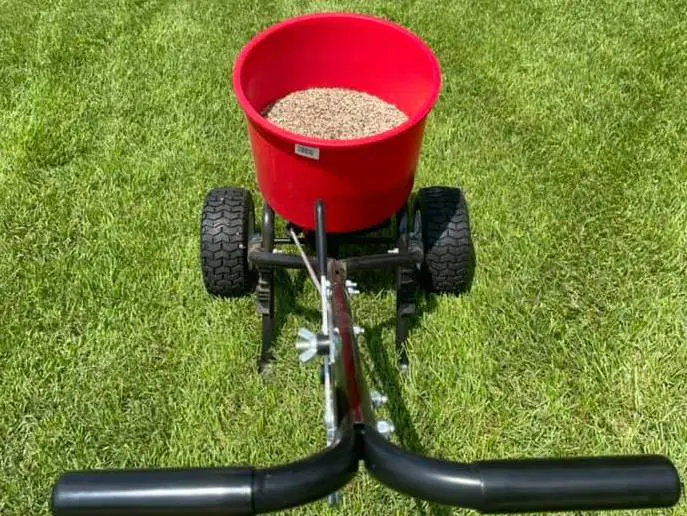
Depending on how thick your lawn is depends on how many pounds of seed per 1,000 ft.2. Aim for 2-3 pounds for well-established lawns, and up to 7-9 pounds of seed per 1,000 ft.2 for thin lawns. Adjust your rotary spreader or drop spreader accordingly.
If you choose, you can also use a slice seeder, or a slit slice seeder. Your local lawn care and landscaping companies will generally use these when overseeding, as they literally slice the soil and drop the grass seeds directly into the troth. This is a surefire way to get the best seed-to-soil contact. You can also rent one. However, if your lawns are generally well-established, a standard rotary fertilizer spreader works just fine.
Fertilization
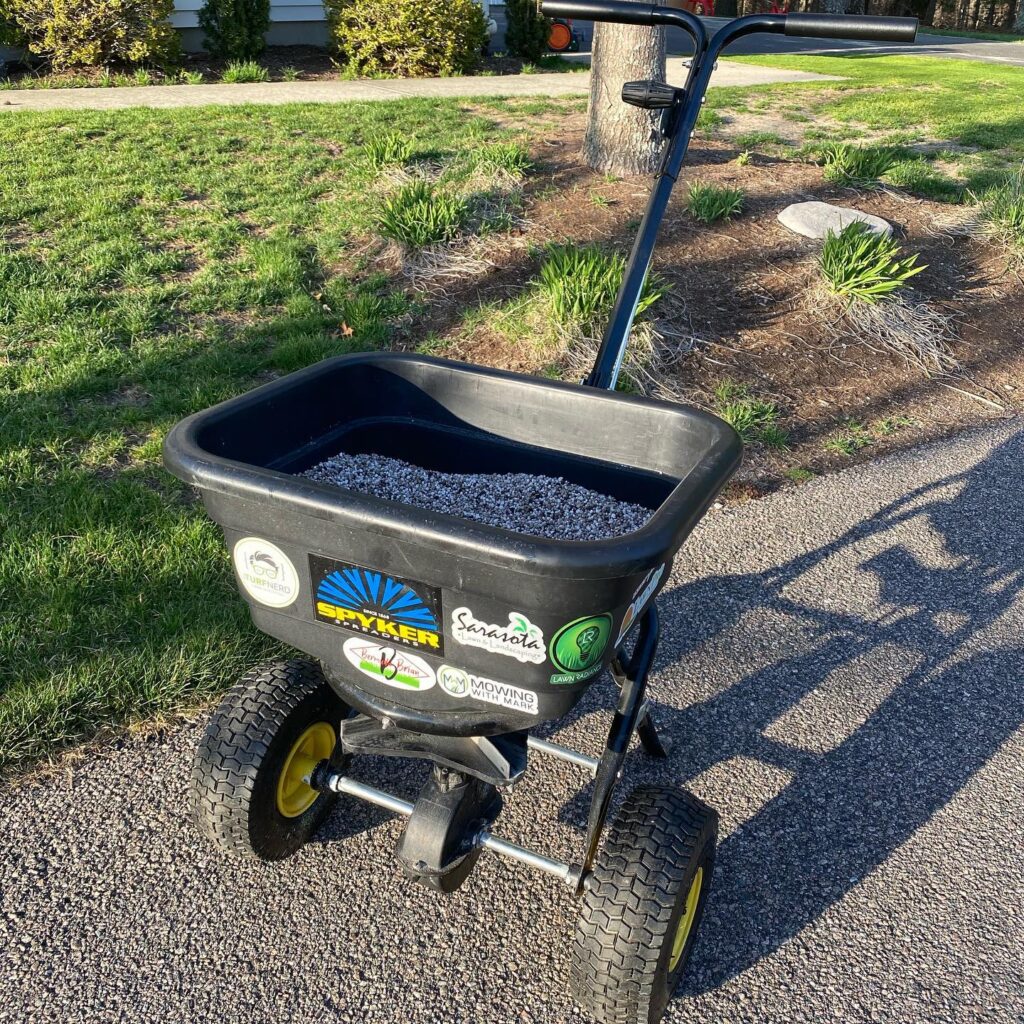
A good time to add a starter fertilizer, organic fertilizer like Milorganite, and a lime application – especially since the lawn was underfed over the summer (1/4 lb. of Nitrogen compared to 1/2 – 3/4 in the spring and fall times, comparatively speaking). If you’ve been controlling weeds in your lawn this season – from your springtime split applications of pre-emergents to spot spraying weeds there-after – then there’s less concern for weeds now. Prevent weeds in your lawn.
Watering
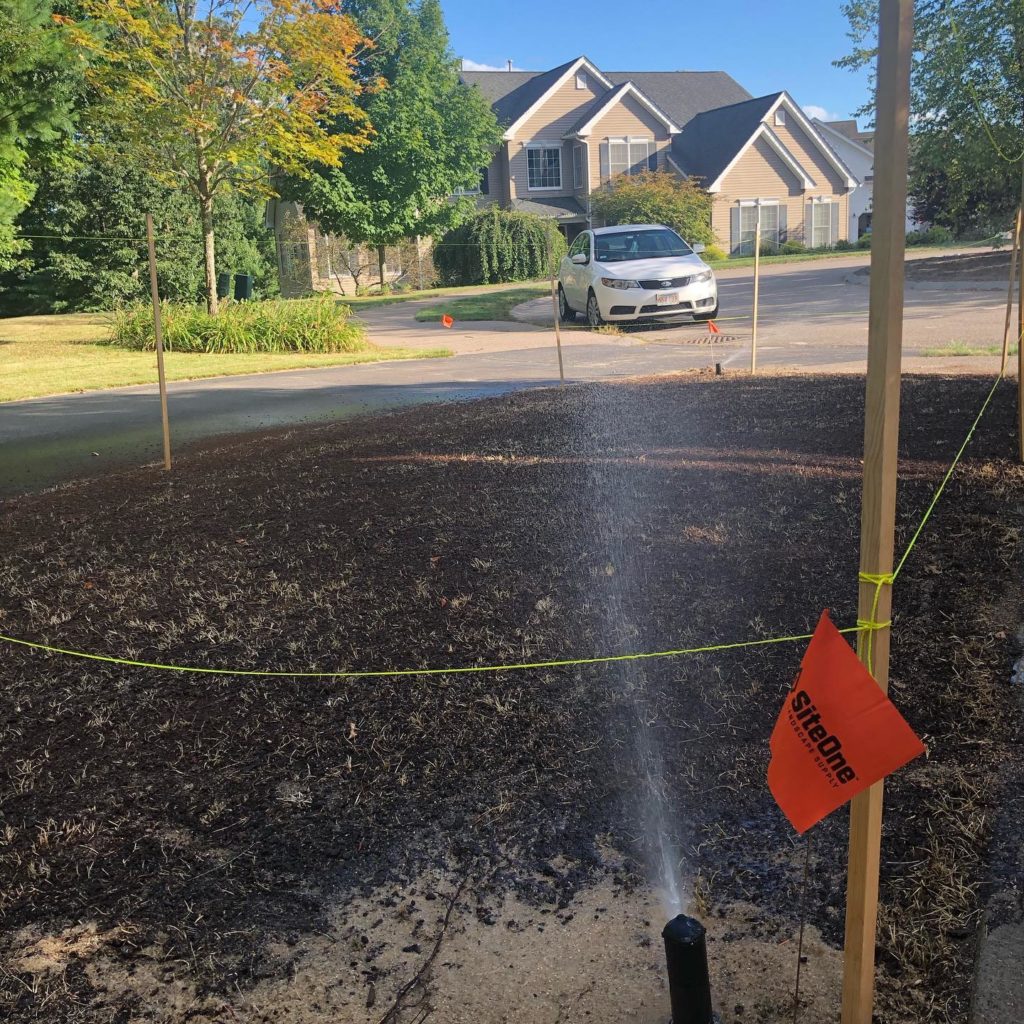
Keep the grass seeds moist. Contrary to our normal lawn care watering practices of “deeply, but infrequently”, now we’re going to water the grass seed 2-3 times per day for around 6-7 minutes, or until the seeds are rehydrated. So completely opposite of summertime irrigation. The new grass will not germinate if it’s dry. Cool overnight air temps and morning dew will help keep the seeds moist for hours naturally, but it’s up to you to keep it hydrated during the day. Use an impact sprinkler or water by hand. Don’t soak. Overwatering may disrupt the seed-to-soil contact and eventually wash out the seeds into your driveway or sidewalk.
Wait
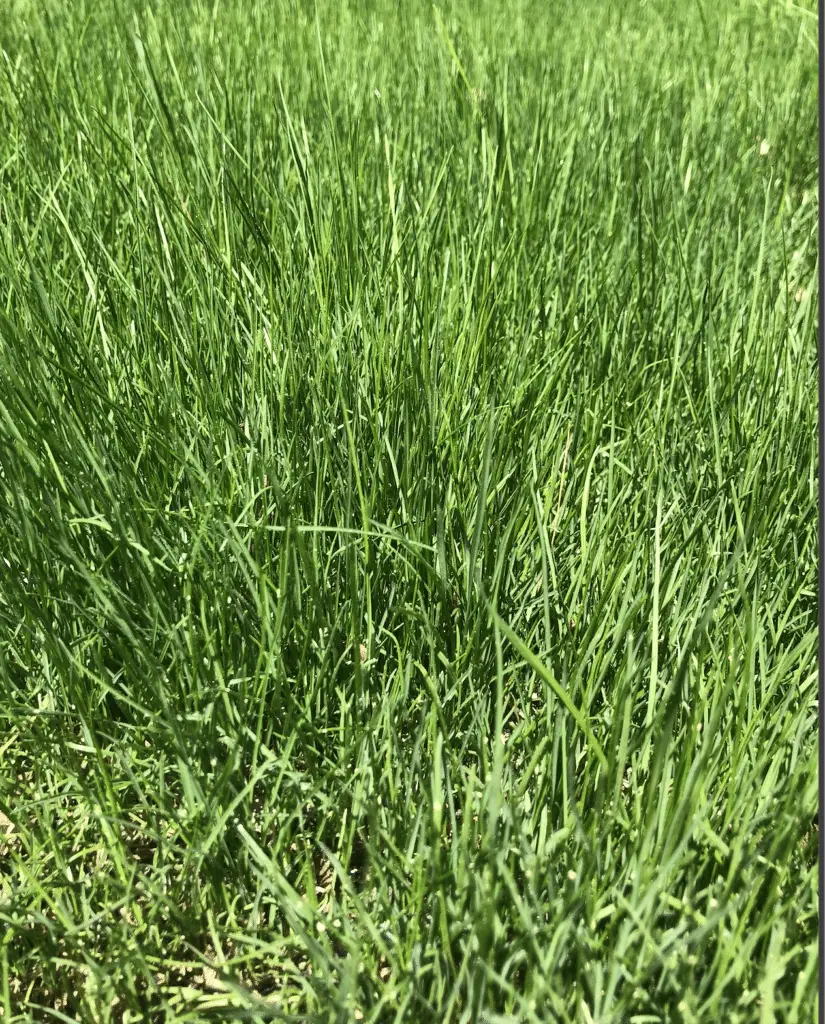
Germination can start as early as 5 days. However, some seeds can take up to 2-3 weeks. So have patience. Avoid foot traffic. Wait to mow until the grass is at least 4″ tall. The weight of your feet and the mower can damage new grass if you mow too quickly. Ensure that your mower blade is very sharp, and bag your clippings.
Enjoy
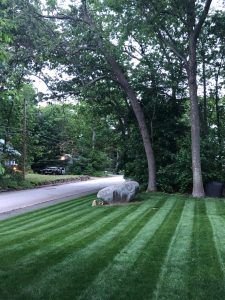
Take pictures, keep a lawn journal, learn from these steps, and now enjoy the fruits of your labor!

When it is your first time to undertake a lawn make-over challenge, it is imperative that you choose the best type of soil. Doing so will guarantee that your turf, flowers, and other plants will grow robustly. Furthermore, everything about lawn care starts from the soil and hence, picking the best type will guarantee you success in your lawn creation endeavor.